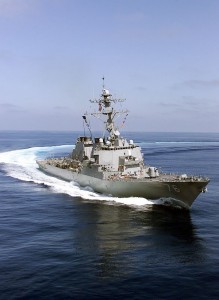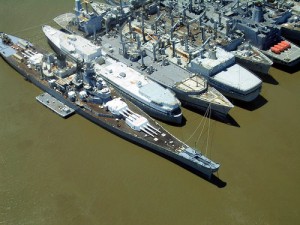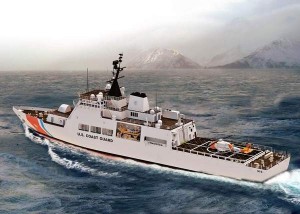 When a President-Elect repeatedly makes a commitment like “350 ships”, it is my humble sense that, as President, Mr. Trump is going to want 350 ships sooner, rather than later.
When a President-Elect repeatedly makes a commitment like “350 ships”, it is my humble sense that, as President, Mr. Trump is going to want 350 ships sooner, rather than later.
He’s certainly not going to want them in 2025, or 2030.
He’s going to want 350 ships darned quick. And cheaply. Sure, maybe he’ll want to set in place a longer-term plan to get 350 modern ships, but if he doesn’t have 350 ships in about three years….he’ll likely be looking for new team at the Navy Department.
Now, I’ve been watching all the usual DC suspects put forth longer-term plans for 350 ships. They’re all good plans, but these experts are all forgetting that President-elect Trump will be headed back out to the hustings in about two years. Trump is a political animal. So these shipbuilding pundits need to take their Lehman Pills and figure out how to get to 350 ships within two (ok, maybe four) years.
So, to help my timid maritime friends a bit, here’s how they can get to 350 mighty fast.
The Fast 350 Plan:
We’re starting with today’s Naval Vessel Register, which shows 272 ships in the U.S. Battle Fleet.
1. Raid the reserves: Of the 13 ships the Navy has in reserve, Rainer (AOE 7) and Bridge (AOE 10) are the youngest. These valuable “one stop shopping” logistical support assets are only 22 and 18 years old–and they’ll cost more than a billion to replace. Sure, they need some serious work to get fully operational (some muttering about gearing problems and a pesky vibration), but, if we use this opportunity to really fix those valuable, fast and BATTLE-HARDENED assets, getting them back into the fleet–why, they’ll serve another 30 years. (+2, 274)
Now, the Navy also has three big-deck steam-powered amphibs in reserve. Tarawa (LHA 1), Nassau (LHA 4) and Peleliu (LHA 5). They’re between 36 and 40 years old, and these multi-billion dollar assets could get patched up, put back into service and still serve another decade doing contingency support work in lower-threat areas. The early LHAs got run out of service with almost undue haste, and it’d be good to see if we can find a way to keep ’em (+3, 277)
 That leaves us with two 30 year old salvage ships, five 50 year-old Austin Class LPDs, and the 56 year old carrier, the Kitty Hawk (CV 63). Probably OK to let these guys stay in reserve, along with upcoming retirees, the Ponce (the last Austin Class left “in service”), and a few tugs/salvage vessels.
That leaves us with two 30 year old salvage ships, five 50 year-old Austin Class LPDs, and the 56 year old carrier, the Kitty Hawk (CV 63). Probably OK to let these guys stay in reserve, along with upcoming retirees, the Ponce (the last Austin Class left “in service”), and a few tugs/salvage vessels.
2. Reclassify: Congress removed thirteen perfectly solid 300-ton Cyclone Class patrol boats from the “Battle Fleet” in 2015, so, Congress may be a bit more sanguine about counting these ships in the Battle Fleet if their boss is a Republican (+13, 290). The SECNAV should also consider including the six remaining Pathfinder Class T-AGSs (Oceanographic research vessels). If the Navy is putting T-AGOS, T-ATFs, and T-ARS in the Battle Fleet, then the T-AGSs deserve to be in as well. They’re out there mixing it up just as much as the T-AGOSs are, so count ’em. (+6, 296).
In the spirit of supporting the incoming Administration’s likely interest in missile defense, SECNAV should name the Sea-Based X-Band Radar, and get it into the Battle Fleet (the craft IS self-propelled, and it IS helping to monitor North Korea, right?). Hopefully the good-will earned by this action will pay off later in some budget discussion (+1, 297).
3. Buy Some Boats: A Navy can never have too few good anchor-handling/OSVs/Tugs. With the collapse of the oil patch, whole OSV ship classes are available at fire-sale prices. Buy about ten of the best-of-breed, paint them grey and let them assume the work done by the tugs and salvage ships–and then transfer them to the Special Forces support squadron as the new T-ATS(X) start entering service in the 2020s. (+10, 307)
 4. Tap the National Fleet: Transfer the USCG’s High and Medium Endurance cutters to the Navy. With the Hamiltons and the Legend Class, that’s an extra 10 ships, and there are 27 Medium-Endurance Cutters in the fleet now (and they’ll be replaced by the new Offshore Patrol Cutter). Of course, there’s a price for these ships–the Navy would need to take on the border security, EEZ and SAR missions. But it can be done. Place USCG Law Enforcement Detachments onboard every vessel possible, and then supplement with SAR for the Deepwater areas that the USCG would normally cover.
4. Tap the National Fleet: Transfer the USCG’s High and Medium Endurance cutters to the Navy. With the Hamiltons and the Legend Class, that’s an extra 10 ships, and there are 27 Medium-Endurance Cutters in the fleet now (and they’ll be replaced by the new Offshore Patrol Cutter). Of course, there’s a price for these ships–the Navy would need to take on the border security, EEZ and SAR missions. But it can be done. Place USCG Law Enforcement Detachments onboard every vessel possible, and then supplement with SAR for the Deepwater areas that the USCG would normally cover.
Transferring the ships solves a lot of problems–it adds a potential new Frigate hullform to the fleet, plus offering the Navy a potential brand new long-range patrol-type ship that could be far more useful forward, in a more naval-oriented role. It’d be a hell of a government food fight, but does the USCG really need big cutters to fulfill their USCG mission? What do they do that a Navy ship with an LEDET can’t, really? (+37, 344)
5. Speed up the Pipeline: The Navy has at least 25 ships in various stages of advanced construction, with an estimated 9 being commissioned between now and Dec 2017. Push for faster completion and integration into the fleet and you could get new ships to tip the scales towards 350 a whole lot faster. (+9, 353)
6. Stop Decommissionings: this is pretty easy. No major surface units are slated for retirement over the next few years (4 tug and salvors plus the Ponce). Sure, some submarines will go, but there’s no way to stop that now–other than eking out a few more months from their final patrol or something, they can’t be run longer than 40 or years.
Conclusion:
These steps would be somewhat “interim”. I certainly assume that Mr. Trump would agree to facilitate the longer-term contracts and production runs needed to truly build up the Navy. But I do suspect that Mr. Trump will want to use the 350 Ship fleet as a capstone accomplishment for re-election.
So, in my mind, the faster a SECNAV can get to 350, the faster that SECNAV can get about trying to really build–I mean really build–the Next Navy.
